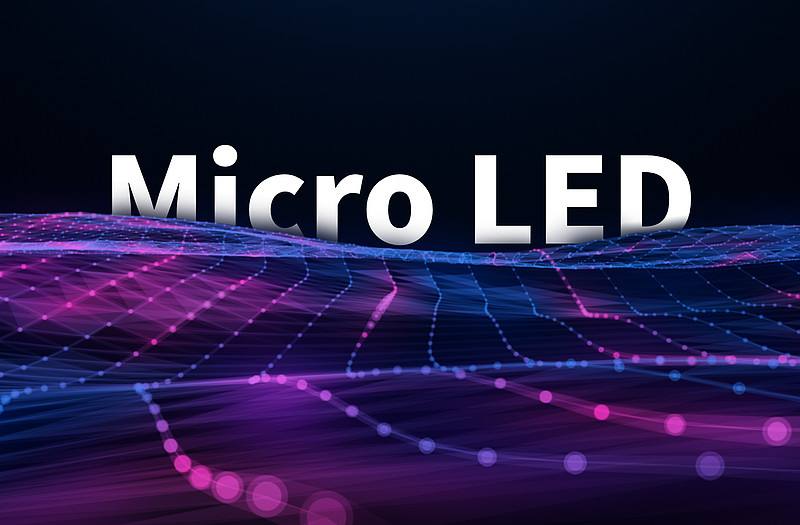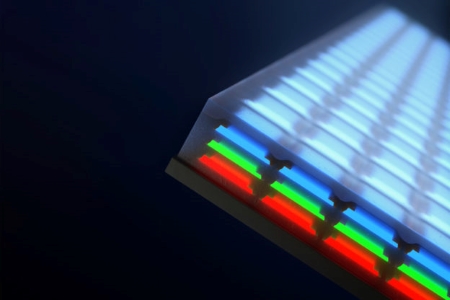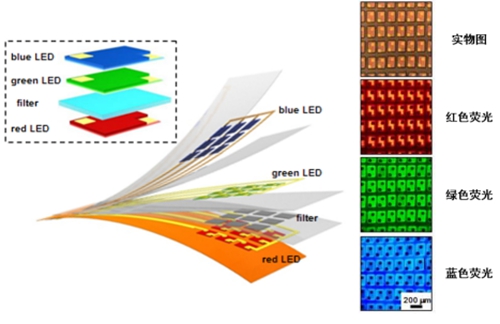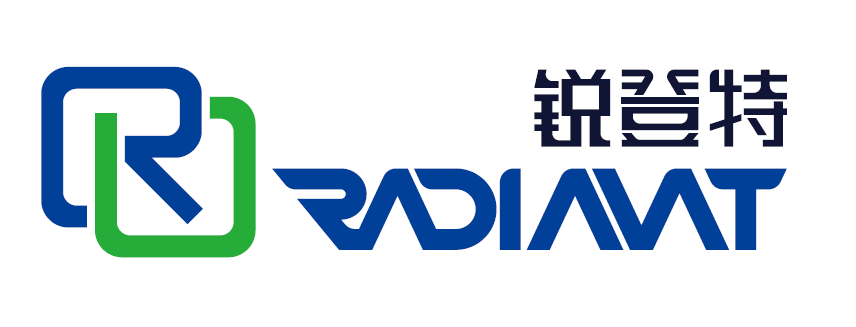Although Micro LED technology can be applied in the field of small-sized wearable devices represented by AR, VR, and smart watches, there are very few practical applications at present. Taking AR glasses as an example, according to incomplete statistics, there will be only three models of glasses using Micro LED technology in 2022, namely Li Weike's Meta Lens, Vuzix's Shield and Tooz's ESSNZ Berlin smart glasses.
Although it has more obvious advantages than Micro OLED technology, the road to Micro LED micro-display application is not smooth. In the final analysis, the problem is still that the development of Micro LED technology is relatively slow, the manufacturing process is not yet mature, the problems of product cost, quality and red light chip efficiency still exist, and it is difficult to achieve full-color, near-eye high-resolution display effects. Large-scale application in the field of micro-display.
Nevertheless, for the research and development of Micro LED technology, LED companies and academia have never stopped. By exploring different technical solutions, Micro LED technology is gradually improved, and the application process of Micro LED in the field of micro display is accelerated and shortened. Recently, a research team led by MIT has made new breakthroughs in the research of full-color stacked structure Micro LED (Stacked RGB Micro LED). In the future, this solution may become a key factor affecting the development of Micro LED micro-display applications.

The research team has developed a full-color vertically stacked Micro LED with a resolution of up to 5100PPI and a size of only 4μm. It claims to be the Micro LED with the highest array density and smallest size known so far. It also benefit to the flexible LED screen. The high resolution and extremely small size of the product meet the application requirements of near-eye micro-display electronic equipment.
This research result has further promoted the development and application of the stacked structure Micro LED, and has once again attracted the attention of the LED industry to this technical solution. Specifically, the special feature of this solution is that, compared with a single pixel formed by RGB Micro LED chips with a traditional parallel arrangement structure, the application of the stacked arrangement scheme can reduce the size of the display module while improving the performance of the Micro LED display.

Quality and productivity. In detail, the stacked structure enables a single pixel to occupy less space, so a higher pixel density can be achieved per unit area, thereby meeting the application requirements of micro-display devices for small-sized, high-definition resolution display modules. In terms of production, due to the application of the stacked structure, RGB three-color chips are integrated on a single chip, which shortens the transfer time of Micro LED chips to the substrate and improves the placement accuracy, thereby optimizing the production efficiency and cost of Micro LED displays. Due to the transformation of the structure, the production and application of Micro LED have gained more possibilities.
Therefore, in recent years, domestic and foreign enterprises, universities, and research institutes have participated in the research of the stacked structure Micro LED to promote the continuous progress of this technology. What do you think of the transparent LED screen. According to incomplete statistics, domestic and foreign LED companies such as Seoul Viosys, Lumens, Sundiode, and Nuoshi Technology, as well as the domestic research team of Tsinghua University, have participated in the research of stacked Micro LED in recent years.
In 2022, Seoul Viosys demonstrated the WICOP Pixel full-color single-chip display technology. Micro LED chips. The application of WICOP Pixel technology reduces the production process of Micro LED display to one-third, improves the yield rate of Micro LED, reduces the manufacturing cost, and reduces the light-emitting area of Micro LED to that of the existing planar structure products. A third, for deep black colors and sharp images. In February of this year, Seoul Viosys demonstrated the Micro LED display based on WICOP Pixel technology, with the brightness increased to 4000nits, expanding the application range of Micro LED to the Metaverse field including AR and VR.
In May 2021, the research team of the Department of Electronic Engineering of Tsinghua University developed a Micro LED device array design based on stacked red, green and blue (RGB). Compared with the traditional side-by-side RGB device structure, under the same device size, the stacked structure can increase the display resolution by three times compared with the side-by-side structure, which not only improves the luminous performance of the device, but also reduces the processing accuracy during the preparation process requirement.
It can be seen that in recent years, through the research on the stacked structure, enterprises and universities have improved the brightness and resolution of Micro LED micro displays, and promoted the development of full-color high-definition Micro LED micro displays. Facing the existing key technical problems of Micro LED, the stacked structure provides a feasible solution, and opens up a new technical path for expanding the application of Micro LED technology in AR/VR and other micro display fields. However, while solving the existing problems of the traditional structure, the stacked Micro LED solution also brings new technical difficulties.

Micro LED technology manufacturer Porotech once pointed out that the stacked structure means that the three colors of light will be emitted from different heights of the display, which will complicate the optical design, and also affect the accuracy of the spacing between LED and the different layers in the structure. Alignment accuracy puts forward higher requirements.
Although there is no actual application of micro-display products, the above-mentioned companies and universities are optimistic about the stacked technology, believing that the solution can accelerate the development of Micro LED in AR/VR and other fields. Therefore, it is believed that future research on stacked Micro LED technology will not stop. As terminal leading companies such as Apple and Samsung continue to increase their layout in Micro LED technology, the research on Micro LED technology solutions including stacked structures may be rapidly advanced, becoming an important part of exploring the commercialization of Micro LED.
Post time: Mar-15-2023
